Exploring Diverse Website Design Styles: A Comprehensive Guide
Website design has often reinvented itself in the past two decades, as bandwidths and user expectations have expanded dramatically. Today, there are many types of website design. Professional web designers are expected to craft varied website designs to serve different types of clients. The most prominent categories of web design today include
- Static
- Liquid
- Adaptive
- Responsive
- Dynamic
- Single Page
- Minimalistic
- Informational
- Business Website
- Blog
- Ecommerce
If you are an aspiring web designer or a business leader planning to invest in professional web design services, it is very important to know about the different types of website design.
11 Essential Types of Website Design in 2025
This blog post discusses 11 different types of website design styles in detail. We will explain their origin, importance, and key characteristics. We’ll also explain what types of websites each web design style is suitable for.
1. Static
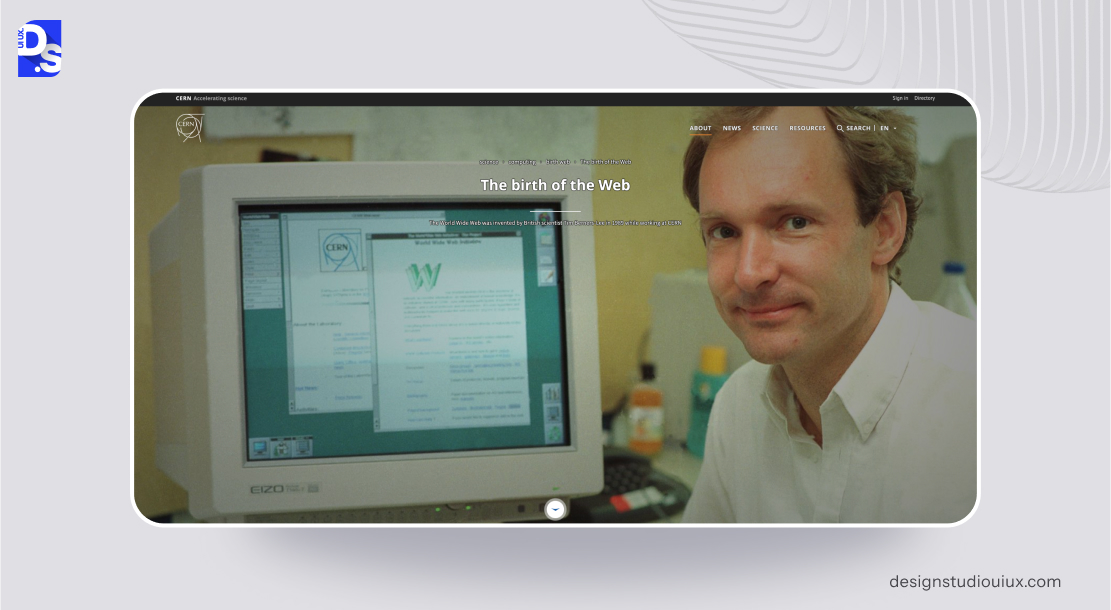
The birth of static websites took place in the early 90s, around the same time the World Wide Web was incepted. Tim Berners-Lee is credited with the creation of the first static website in 91 (CERN). These sites were built using basic HTML. They consisted of fixed content that had to be manually updated by a developer.
Importance of Static Websites
Static websites are lightweight and incredibly fast to load because they do not rely on server-side processing or databases. Without databases or dynamic content, old-school static websites are far less vulnerable to hacking attempts than many modern sites. They also do not require complex server infrastructure or frequent updates and are cheaper to host. Because they do not depend on server-side scripts or databases, static websites are highly reliable.
Key Characteristics of Static Websites
Content is hardcoded in HTML, CSS, and JavaScript files and there is no way to make alterations, except manual editing. Server-side languages such as PHP, Python, or Ruby, do not find use in static websites. Moreover, these websites do not draw from any kind of database.
Since there is no dynamic content generation, static websites load quickly, even on slow connections. They can be hosted on simple web servers or even content delivery networks (CDNs)like GitHub Pages or AWS S3. Static websites are best for displaying information – not for handling user interactions.
Although static web design no longer meets the demands of modern websites – this web design style is still far from obsolete. However, static websites are not suitable for:
- Ecommerce sites
- Social media platforms that need real-time updates and user interactions
- Web applications that require dynamic content and backend processing
Consider using static design only if you are creating:
- Informational websites like company profiles, even pages, etc.
- Simple portfolio pages
- Landing pages for marketing campaigns or product launches
- Archival or historical sites with only text content
2. Liquid Web Design
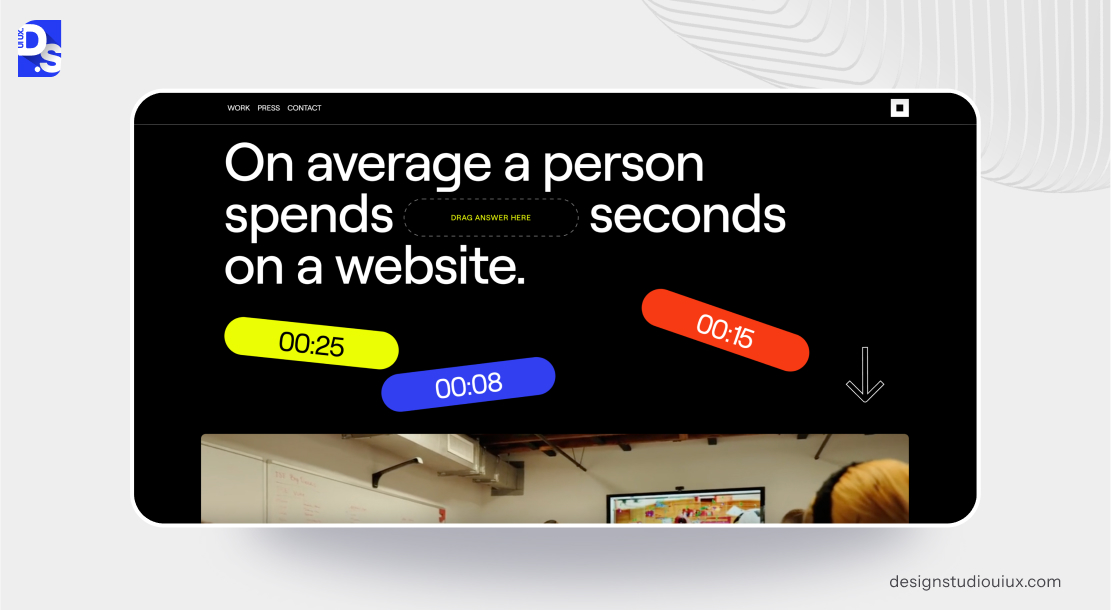
Liquid web design emerged in the late 90s as a response to two factors.
- The limitations of static layouts in the early days of web development
- The growing diversity of screen sizes and resolutions
With the rise of different devices (for example, desktops, and early mobiles), designers needed a way to create websites that could adapt to varying screen widths. Liquid design was one of the first approaches to address this challenge. It uses relative units like percentages instead of fixed units like pixels, allowing layouts to “flow” and resize based on the user’s screen size.
Importance of Liquid Web Design
Liquid design was the first web design approach to make websites adapt to different screen sizes. When content can be resized to fit the screen, it brings down the need to scroll horizontally, thereby improving readability.
By resizing content to fit the screen, liquid design reduces the need for horizontal scrolling and improves readability.
Before modern responsive design came to the forefront, liquid design was the go-to approach for creating flexible layouts. We can say that liquid design built the foundation on which modern responsive design now flourishes.
Key Characteristics of Liquid Web Design
Liquid designs use percentages (%) or em units instead of fixed units like pixels (px) to define widths, margins, and padding. The layout ‘flows’ to fill the available screen space, resizing all website content proportionally.
While the liquid design works well for moderate screen size variations, it can struggle with modern, very large, or very small screens. Hence, it is been largely replaced by responsive design.
3. Adaptive
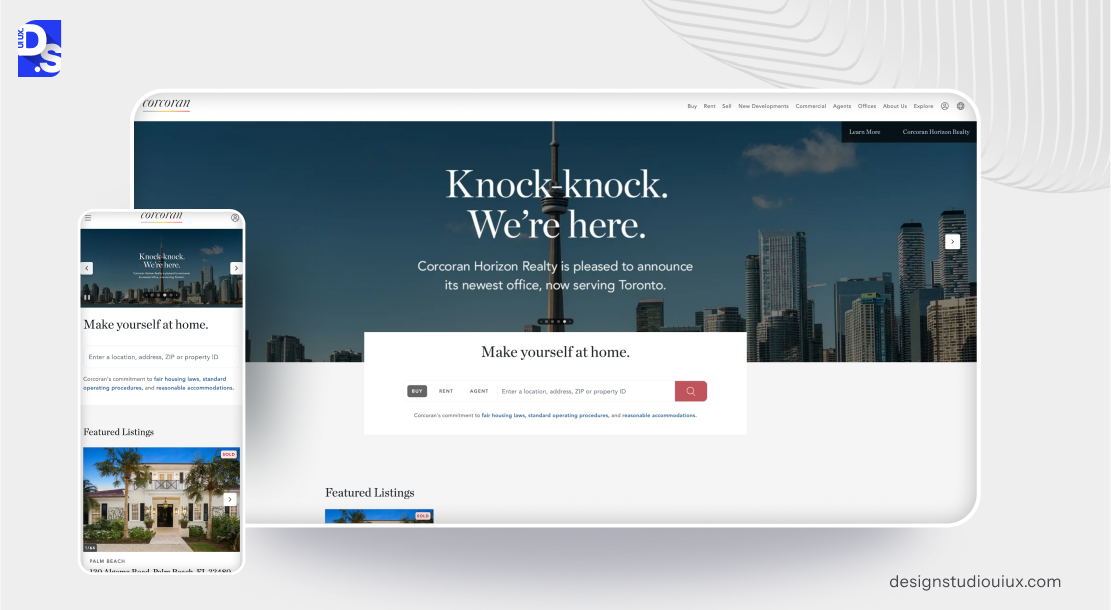
While fluid design made use of fluid layouts, the adaptive design involved the creation of multiple fixed layouts custom-made for particular screen sizes. So, as users access adaptive design-based websites, they can enjoy layouts customized for their devices.
Importance of Adaptive Web Design
Adaptive web design was able to render a smooth user experience across diverse devices and screen sizes. By using multiple fixed layouts, you can optimize performance and usability for desktops, tablets, and smartphones. It fuels accessibility, boosts loading speed, and ensures compatibility. The responsiveness of websites is enhanced and they become increasingly user-friendly and able to engage a wide audience.
Key Characteristics of Adaptive Web Design
Since multiple fixed layouts are used for specific screen sizes, you get precise control over how content is displayed across devices. Server-side detection is often used to identify the user’s device and accordingly serve the appropriate layout.
Adaptive websites can deliver device-specific content (smaller images for mobile or more features for desktops). By serving only the necessary assets for a specific device, adaptive sites offered improved usability, faster load times, and lag-free browsing experiences.
You have to maintain multiple layouts if you are opting for adaptive design. That indeed is a challenge. With the recent explosion of devices and screen sizes, it is challenging to create layouts for every possible scenario. That’s why adaptive web design has also been overshadowed by responsive design.
4. Responsive
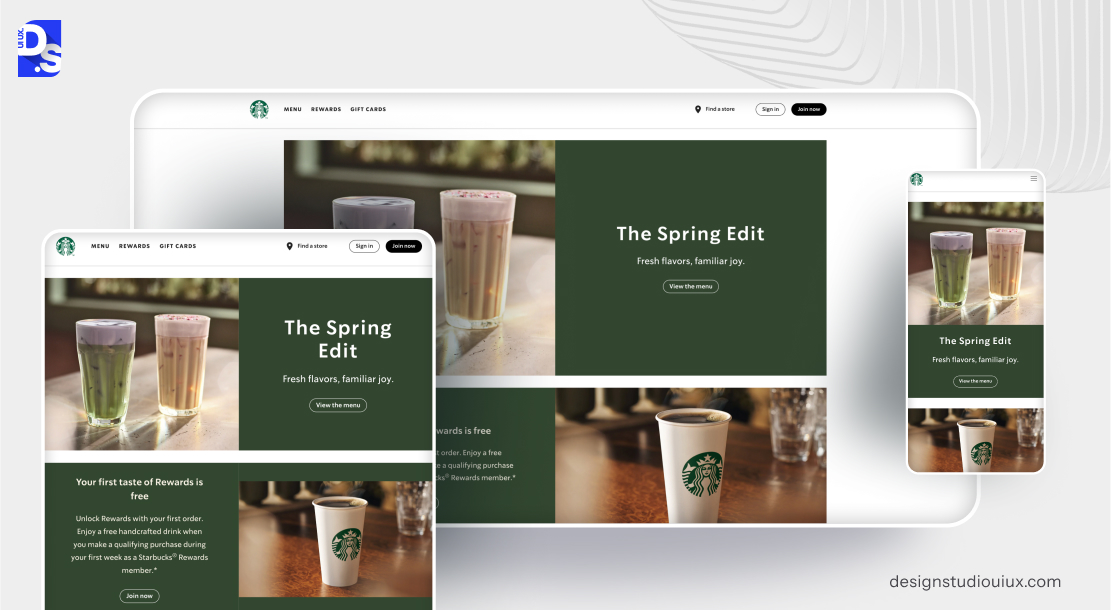
Responsive web design (RWD) is by far the most popular type of website design approach today. It offers a more flexible and future-proof solution than adaptive or liquid design. With this web design approach, you can create a single website that works beautifully on all devices.
Importance of RWD
Responsive design ensures that websites function and look great on any device. By adapting to the user’s screen size, RWD eliminates the need for zooming, scrolling, or resizing.
Maintaining a single responsive website is more efficient than creating separate site versions for different devices.
Key Characteristics of Responsive Web Design
Layouts are built using relative units like percentages instead of fixed units like pixels, allowing them to resize proportionally. Images and media are scaled using CSS to ensure they fit within their containers without breaking the layout. CSS media queries are used to apply different styles based on the device’s features. Designers define breakpoints where the layout adjusts to fit different screen sizes. Responsive design uses a single HTML/CSS codebase – simplifying site maintenance.
Pretty much every major website – from Smashing Magazine to Starbucks, has adopted this web design approach since its invention. You too should opt for it if you’re creating:
- Ecommerce websites
- Blogs and news sites
- Corporate websites
- Web applications
Responsive design is the industry standard for modern web design. Make sure to learn about responsive website design best practices before adopting this design approach for your site.
5. Dynamic

The advent of server-side scripting languages like PHP and Ruby on Rails allowed developers to create sites that could generate content on-the-spot dynamically based on user interactions. This marked the beginning of dynamic web design This web design approach helps create interactive, personalized, and data-driven web experiences. It powers most modern web apps.
Importance of Dynamic Web Design
Dynamic websites allow users to interact with content in real-time. It enables features like user accounts, comments, content personalization based on user behavior, and live updates. Dynamic sites can handle large amounts of data and traffic. They are ideal for social media platforms, ecommerce sites, and content management systems. These websites reduce the need for manual updates by generating content on the fly.
Key Characteristics of Dynamic Web Design
Dynamic websites rely on server-side scripting languages like PHP, Python, Node,js, to generate content dynamically. Content is often stored in MySQL or MongoDB databases and retrieved in real-time based on user requests. Dynamic websites enable features like login systems, search functionalities, and real-time updates. CMS platforms like WordPress use dynamic design to allow non-technical users to manage and update content.
Facebook, Amazon, and Netflix are some popular examples of dynamic sites.
Use this web design approach if you want your site to:
- Display personalized product recommendations
- Feature thousands of user reviews
- Offer real-time inventory updates
- Share live updates on users’ feeds
- Deliver personalized recommendations content based on users’ browsing history
Dynamic web design is the backbone of most modern web apps. It is also ideal for sites that need to offer users interactivity, personalization, and scalability. However, dynamic sites are more complex to develop/maintain than static or responsive websites.
6. Single Page

in the early 2010s JavaScript frameworks like AngularJS, React, and Vue.js were launched. These frameworks allowed developers to create highly interactive, app-like experiences within a single HTML page. Thus, single-page web design was born and it quickly gained popularity.
Importance of Single-Page Web Design
The web design approach offers faster, seamless browsing experiences on mobile screens. Single-page sites eliminate the need for page reloads by dynamically updating content as users navigate. This fast, fluid, reload-free website browsing experience felt app-like to users. Since single-page sites rely on modern JavaScript frameworks – they are easier to develop and maintain than traditional multi-page sites.
Key Characteristics of Single-Page Web Design
Content is dynamically loaded and updated using JavaScript so there is no need for full-page reloads. These sites are divided into sections – each serving a specific purpose (About, Services, Contact). Single-page designs often include animations, parallax scrolling, and other interactive features. Single-page sites usually have simple layouts, with a clear hierarchy and minimal distractions.
Some of the most important web design best practices are naturally built into single-page sites so that they can load fast and offer great mobile experiences with hassle-free navigation. That’s why popular platforms like Apple’s product pages, Tesla’s site, and Medium’s storytelling platform use single-page design. You should use this design approach if you are creating:
- Dynamic portfolios
- Dynamic landing pages
- Small business websites with limited content
- Storytelling websites
Single-page sites load faster, are immersive, and are easily scrollable. But, they are not ideal for content-heavy, SEO-focused sites.
7. Minimalistic

Minimalistic web design is all about clarity, simplicity, and the removal of unnecessary design elements. This design approach combatted the cluttered, complex sites of the early 2000s. The rise of mobile-first design further solidified minimalism as a dominant web design trend.
Importance of Minimalistic Design
Minimalistic design is synonymous with clean, functional, and aesthetically pleasing websites. Eliminating clutter makes websites easier to navigate and understand. Fewer elements and simplified code result in faster loading times, while minimalistic design puts the spotlight on the content. The clean look of minimalistic design is visually appealing and associated with professionalism. Moreover, minimalistic design is mobile-friendly.
Key Characteristics of Minimalistic Web Design
This design focuses on the essentials, removing any elements that do not serve a functional purpose. We’re talking uncluttered layouts, limited color palettes, clean typography, and flat design elements with no gradients, shadows, or other embellishments.
8. Informational

Informational web design originated in the early days of the Internet when websites were primarily text-based information repositories. Over time, informational sites have evolved to feature more multimedia elements and responsive designs.
Importance of Informational Web Design
Informational sites serve primarily as sources of knowledge. A professional and well-organized informational site can enhance the credibility of the organization behind it. Such sites usually rank well in search engines due to their high-quality content.
Key Characteristics of Informational Web Design
A clear hierarchy that organizes content logically. Readable typography. Limited use of images, videos, and other multimedia elements.
Wikipedia and the CDC’s website are two quintessential informational websites on the Internet.
Opt for this web design type if you are creating:
- Educational sites
- Government site
- Sites for nonprofit organizations
- News portals
- Knowledge bases about a topic/brand
9. Business Website
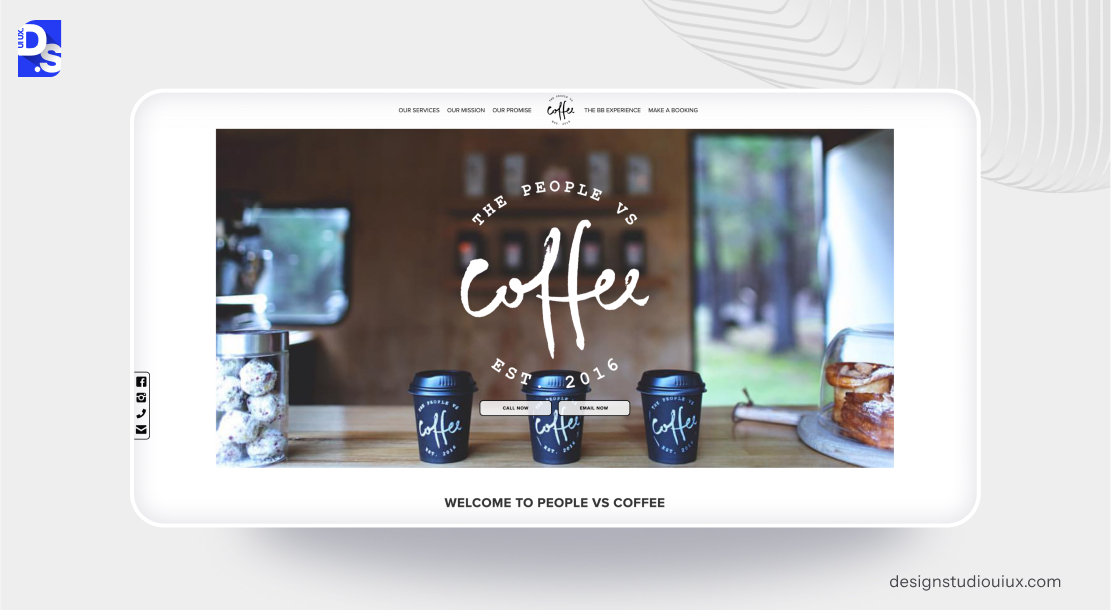
Business website design emerged in the late 90s as companies recognized the Internet’s potential as an advertising and customer-engagement tool
Today almost all businesses have their own websites. They range from simple, static pages with basic info to sophisticated platforms that serve as the digital faces of brands.
Importance of Business Website Design
A business site is often the first point of contact between a brand and its potential customers. A well-designed business site can engage visitors, encourage them to explore products, and capture leads.
Key Characteristics of Business Website Design
A well-designed business website should have a professional aesthetic that reflects the brand’s identity and builds trust. The layout must be clean, visually appealing, and aligned with industry standards.
10. Blog

Blogging began in the late 90s as a way for individual users to share personal thoughts online. Early blogs were simple, text-based pages. As blogging platforms like WordPress (2003) emerged, blog design evolved to include more sophisticated layouts, multimedia integration, and custom designs. Today, blog websites can be both – simple and sophisticated – depending on the creator.
Importance of Blog Website Design
A blog website can retain readers, encourage interaction, and establish credibility in a niche – for both individuals and businesses.
Key Characteristics of Blog Website Design
A well-designed blog website should have clean layouts, responsive design, legible fonts, and intuitive navigation systems that make it easy to find relevant posts. Blogs can also feature images, videos, and social media buttons (to encourage readers to share posts).
11. Ecommerce Website Design
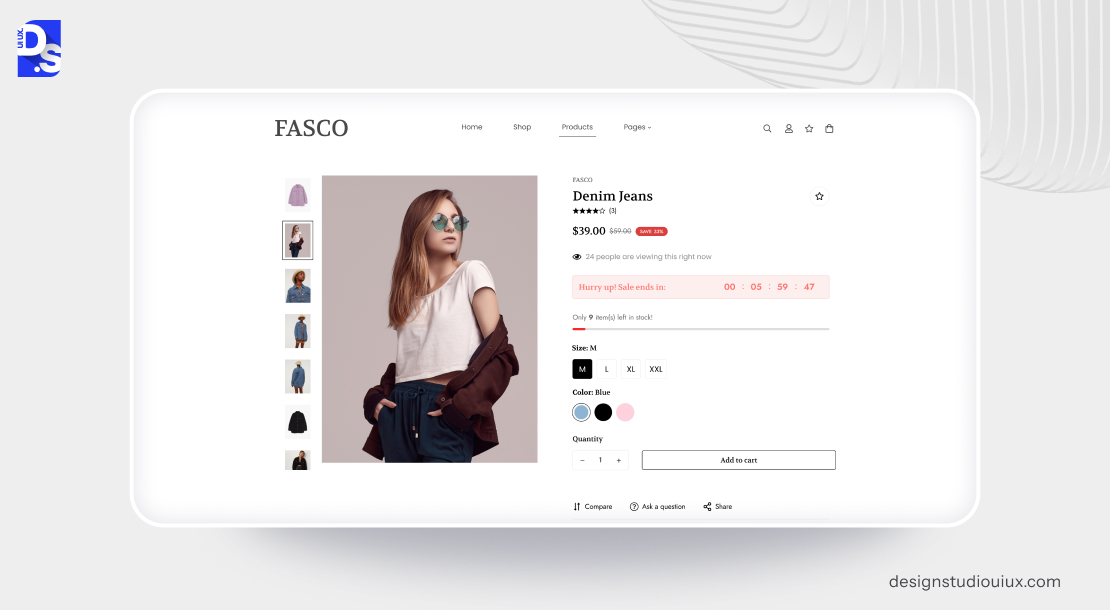
eCommerce website design was all about “functionality over aesthetics” when it began in the mid-90s with platforms like eBay. These sites almost looked like glorified Excel sheets. Today, most eCommerce sites are sophisticated platforms with cutting-edge custom designs.
Importance of Ecommerce Website Design
A well-designed site can be an eCommerce brand’s main point of contact with users. It can also be a brand’s main source of sales. Ecommerce design reflects a brand’s identity. A well-designed site can set an eCommerce brand apart from its competitors
Key Characteristics of Ecommerce Website Design
An effective eCommerce website should have user-friendly navigation, responsive design, high-quality product images, and secure payment gateways. Following these non-negotiable Ecommerce website design best practices is essential for any business selling products/services online.
Conclusion
Website design continues to evolve, offering diverse styles tailored to different needs. From static and liquid layouts to dynamic, responsive, and eCommerce designs, each approach serves a specific purpose. Understanding these styles helps businesses and designers create effective, user-friendly websites that align with modern expectations and technological advancements.
Which of these types of website design do you plan to invest in for your website? Reach out to Design Studio UI UX and let us help you make the right decision.
Our web design pros specialize in all of these web design approaches. Contact us now and we’ll give you a free run down on which approach might be best for your website!

comments
Add comment